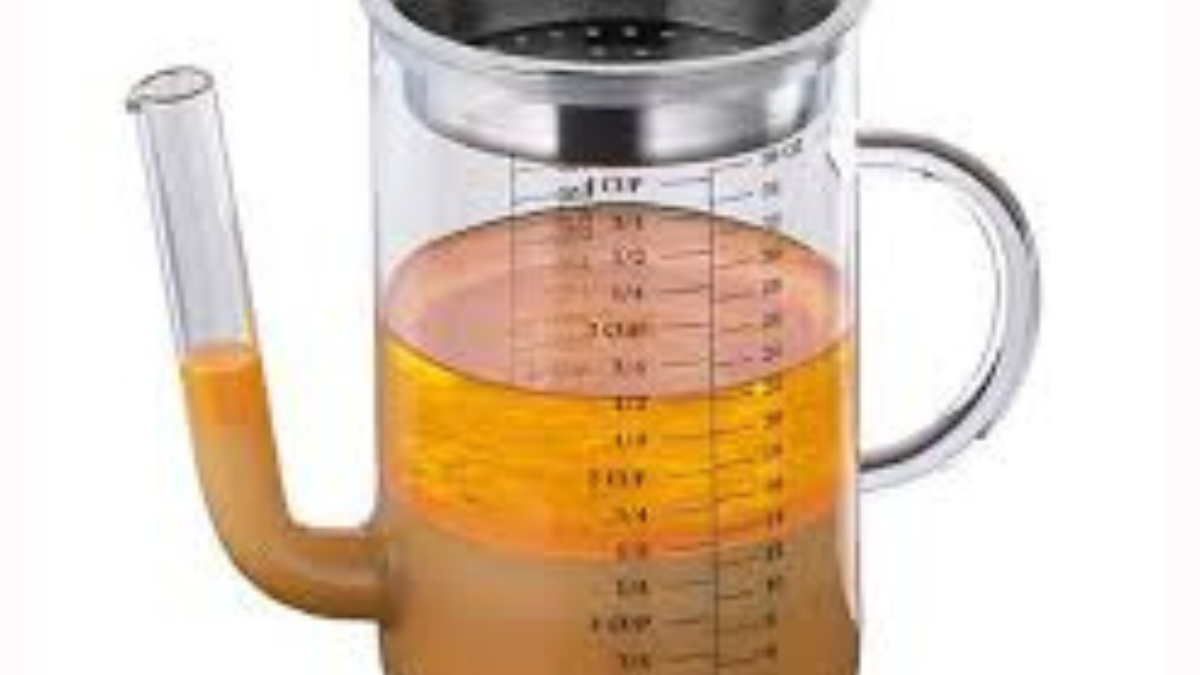A gravy separator The Ultimate Guide to Perfectly Smooth Sauces is an essential kitchen tool for those who love making rich, flavorful, and smooth gravies. Whether preparing a Thanksgiving feast, a Sunday roast, or a simple weekday meal, a grav separator ensures that unwanted fats and oils are removed, leaving behind a well-balanced and delicious sauce.
This article will explore the grav separator in detail, including its uses, benefits, types, and how to choose the best one. We’ll also provide FAQs and expert tips to help you make the most of this indispensable kitchen gadget.
What is a Grav Separator?
A grav separator is a kitchen utensil designed to separate fat from the liquid in gravies, broths, and sauces. It typically consists of a pitcher-like container with a spout positioned at the bottom. This design allows the fat, which rises to the top, to stay behind while the lean, flavorful liquid is poured out.
How Does a Grav Separator Work?
Using a grav separator is simple:
Pour the drippings from roasted meats or soups into the separator.
Allow the mixture to settle, so the fat rises to the top while the broth remains below.
Pour the broth from the bottom spout, leaving the fatty layer behind.
This process results in a healthier, less greasy gravy with a smooth consistency, enhancing the overall taste of your dish.
Benefits of Using a Grav Separator
Using a grav separator offers several advantages:
Healthier Meals
Removing excess fat from gravies and broths reduces calorie intake and promotes heart health.
Enhanced Flavor
Without the overpowering presence of fat, the true flavors of herbs, spices, and meat juices shine through.
Better Texture
Fat can make gravies greasy and unappetizing. A grav separator ensures a smooth, lump-free consistency.
Multipurpose Use
Beyond gravies, these separators are excellent for removing fat from homemade stocks, soups, and stews.
Types of Gravy Separators
There are several types of gravy separators, each with unique features to suit different cooking needs.
Plastic Gravy Separator
- Lightweight and affordable
- Dishwasher safe
- Ideal for occasional use
Glass Gravy Separator
- Durable and heat-resistant
- Does not absorb odors or stains
- Slightly heavier than plastic models
Stainless Steel Gravy Separator
- Long-lasting and sturdy
- Resistant to high temperatures
- Preferred by professional chefs
Gravy Separator with Strainer
- Includes a built-in strainer to remove solid bits
- Provides extra refinement for smoother gravies
- Ideal for those who want perfectly clear sauces
How to Choose the Best Gravy Separator
When selecting a gravy separator, consider the following factors:
Material
Choose between plastic, glass, or stainless steel based on your durability and maintenance preferences.
Capacity
Gravy separators come in various sizes, from 1 cup to 4 cups. Pick one based on the quantity of gravy you typically make.
Ease of Cleaning
Opt for a dishwasher-safe model for easy cleanup.
Spout Design
A well-designed spout prevents spills and ensures smooth pouring.
Additional Features
Some models include measurement markings, heat-resistant handles, and fine mesh strainers to enhance functionality.
How to Use a Gravy Separator for Best Results
Follow these simple steps for effective fat separation:
Collect Drippings – After roasting meat, pour the pan drippings into the separator.
Let it Settle – Allow a few minutes for the fat to rise to the top.
Pour Carefully – Slowly pour out the lean liquid through the bottom spout, keeping the fat behind.
Discard the Fat – Dispose of the remaining fat properly or save it for other cooking uses like frying or flavoring dishes.
Expert Tips for Using a Gravy Separator
- Use a Warm Separator: Pre-warming a glass or metal gravy separator helps maintain the temperature of the liquid.
- Strain First: If your separator does not have a built-in strainer, use a fine mesh sieve to remove solid bits before pouring.
- Be Patient: Letting the liquid sit for a few extra minutes allows complete fat separation.
FAQs
Q: How do I clean a gravy separator?
A: Most gravy separators are dishwasher safe, but hand washing with warm, soapy water ensures longevity. Pay special attention to the spout and strainer.
Q: Can I use a gravy separator for soup stock?
A: Yes! A gravy separator is perfect for removing excess fat from homemade stocks and broths.
Q: Is a plastic or glass gravy separator better?
A: Both have advantages: plastic is lightweight and budget-friendly, while glass is more durable and resistant to stains.
Q: How long does fat take to separate in a gravy separator?
A: Typically, fat rises to the top within 1-3 minutes, but waiting longer ensures better separation.
Q: Can I store gravy in a gravy separator?
A: It is best to transfer the gravy to a storage container after separation to avoid spillage and preserve freshness.
Conclusion
A gravy separator is a must-have tool for anyone who enjoys making delicious, smooth, and healthy sauces. By removing excess fat, it enhances flavor, texture, and overall presentation. Whether you choose a plastic, glass, or stainless steel model, the right gravy separator will elevate your cooking and help you achieve restaurant-quality results at home.
With proper use and maintenance, this simple kitchen gadget will become an invaluable part of your culinary routine. If you don’t already own a gravy separator, now is the perfect time to add one to your kitchen essentials!



